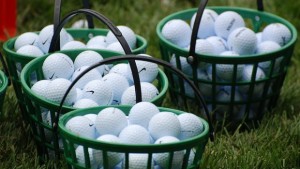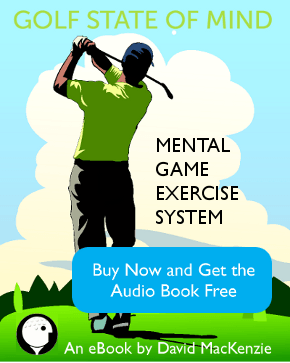
So how do you improve the quality of your practice and make better use of that valuable time?
For most golfers, a driving range session is about hitting ball after ball at the same target, tinkering with swing changes. But how effective is this practice time really? From my experience it’s not.
Think your practice sessions as a microcosm of the game itself: by practicing with a solid mental approach – and practicing your mental approach itself – your sessions will be vastly more effective. And most importantly, that means your game will improve faster, too.
1. Change your target and club as often as possible.
How many shots do you hit on the golf course to the same target from the same spot with the same club? The answer is none. So why would you not practice as you would play? Ben Hogan used to practice by switching up clubs and targets on the driving range because he knew the importance of practicing as he would be playing on the course.
2. Stick to your pre-shot routine
Remember the pre-shot routine you learned in lesson 1? Of course you do! Incorporate it into as many shots as possible during your practice session – this will help the routine become second-nature, and it will make your practice sessions more effective by ensuring you are as focused and clear-headed as you need to be before each swing.
3. Practice with a purpose:
Always have an objective in mind, whether you’re on the driving range, short game or practice putting green. What are you working on today? Whether it’s hitting “the nine-shots” or “the good miss” drill (my ebook is packed with games and drills you can use on the practice range), make sure every practice session has a clear goal and structure. Accomplish something each time. Your confidence will improve, too.
4. Are you simulating course conditions?
Tour pros will try to simulate as much pressure as possible when they practice. Graeme MacDowell is known to run on the spot to get his heart rate up to tournament conditions. My recommendation is that you mix up club selections as much as possible and play games with yourself, always trying to beat your best score. For example: how many balls out of 20 can you land between 2 targets on the driving range? Now you have a benchmark – a score to beat – and you’ve just added a little pressure. This is practicing!
5. Practice visualization and feel
This is about practicing your mental approach to each shot. Seve Ballesteros learnt to play golf with only a 3-iron. He could do everything with it – play from all distances, chip and putt. It didn’t matter that the club had the loft of a 3-iron, Seve was able to see and feel shots and pull them off. Here’s a drill for you from my eBook:
Try hitting the same club to targets of different distances. For example, take your 5-iron and try to hit it first to the 200, then 175, 150, 125 and finishing on the 100.We would never do this on the course, but it’s a good drill for improving feel. To get as good as you can be involves developing feel for your shots – that is, being able to shave off or add yards to the same club to get the ball as close as possible to your target.
Do you want some great practice ideas to make your practice time as effective as possible? Try the drills and game I’ve made available in the Mental Game Fundamentals and Practice Drills eBook.
6. Practice your bad shots, too
By this I mean your reactions to poor shots. As Bob Rotella said: “It’s not what happens to golfers but how they choose to respond to what happens, that distinguishes champions.” How we choose to react (and it is a choice) plays a big part in how we perform – so use your time at the range to practice shrugging off poor shots. Notice them, choose to react to them with indifference, and keep going.
If you want more of these drills on demand, just by the practice drills eBook for the cost of a couple of buckets of balls! Download instantly Now!

